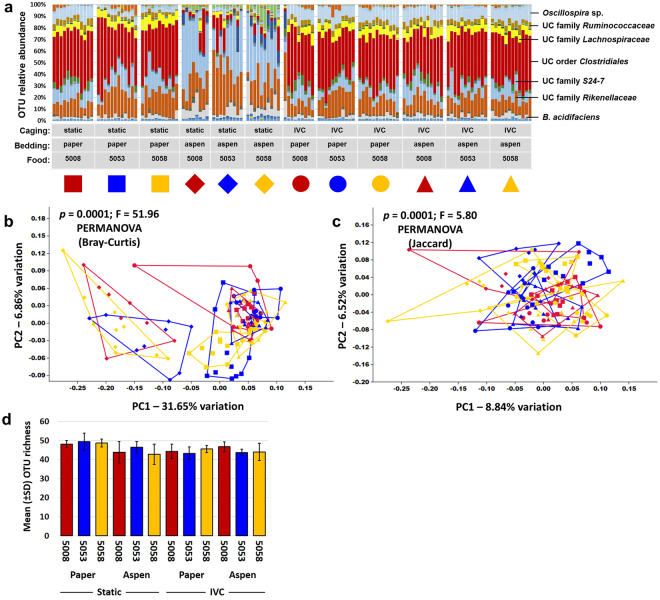Figure 5.
Interactions between caging and bedding have strong effect on cecal microbiota. (a) Stacked bar chart showing relative abundance of all operational taxonomic units (OTUs) detected in the cecal contents of 16.5 week-old mice housed in static or ventilated (IVC) microisolator caging, with paper or aspen bedding, and fed one of three standard rodent chows (5008, 5053, or 5058), thirteen weeks after arrival; (b,c) principal coordinate analysis (PCoA) of the samples shown in (a) demonstrating the difference in cecal microbiota of mice housed under the various conditions tested as determined using both Bray-Curtis (b) and Jaccard (c) distances, legend above. All p values indicate main effect, results of pairwise comparisons shown in Supplementary Tables S10 and S11 respectively; (d) bar chart showing mean ± SD number of OTUs detected in cecal contents. Combinations of colors and symbols are used to identify factors: red = 5008; blue = 5053; yellow = 5058; squares = static microisolators with paper bedding; diamonds = static microisolators with aspen bedding; circles = IVCs with paper bedding; triangles = IVCs with aspen bedding.

